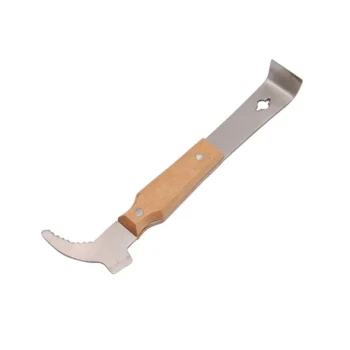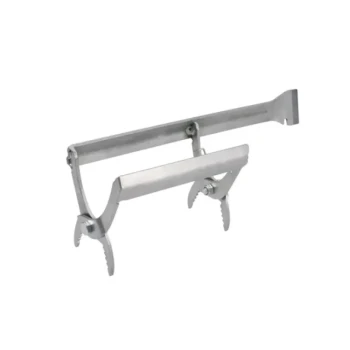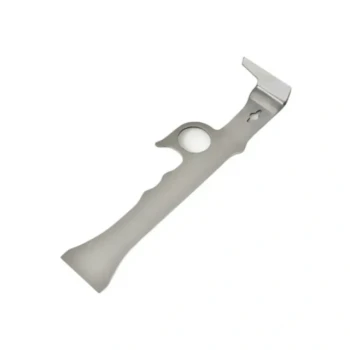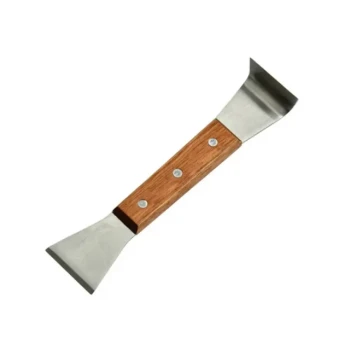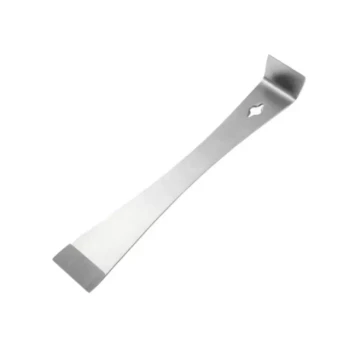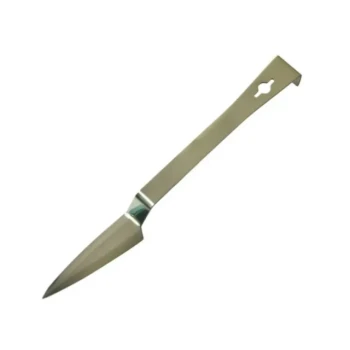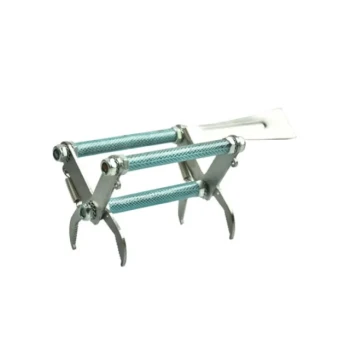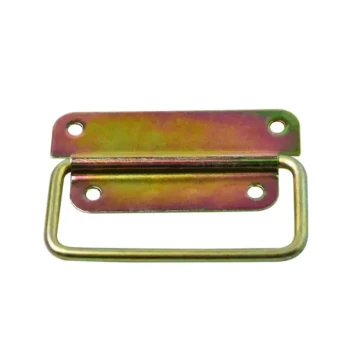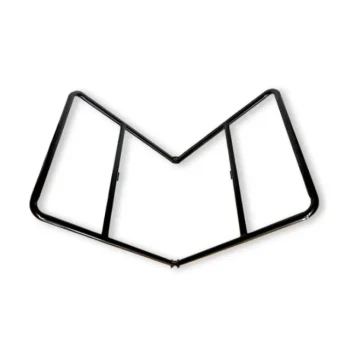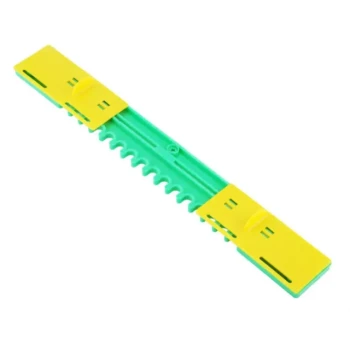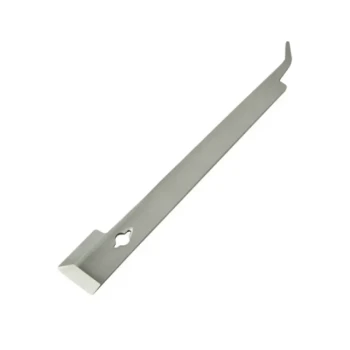The definitive recommendation for most beginners is the Langstroth hive. Its overwhelming popularity means that equipment is standardized, replacement parts are easy to find, and a vast community of experienced beekeepers is available to provide guidance and mentorship. This ecosystem makes it the most straightforward entry point into the craft.
Your first hive is more than just a box for bees; it's a commitment to a specific beekeeping philosophy. The core decision is not between brands, but between three distinct approaches: the industry-standard Langstroth, the minimalist Top Bar, and the technology-driven Flow Hive.

Understanding the Three Main Hive Architectures
Choosing a hive determines how you will interact with your bees, manage their health, and harvest honey. Each design has a fundamentally different operational principle.
The Langstroth Hive: The Industry Standard
The Langstroth is the most recognizable beehive in the world. It consists of a series of vertically stacking boxes.
Its design is completely modular. The bottom boxes (the "brood chamber") are for the queen to lay eggs and raise young bees, while the upper boxes (the "honey supers") are for honey storage.
Because its dimensions are standardized, you can easily buy new boxes, frames, and other equipment from any supplier. This universal compatibility is its greatest strength, especially for a beginner seeking advice.
The Top Bar Hive: The Naturalist's Choice
The Top Bar hive is a single, long, horizontal box covered with individual bars. The bees build their comb down from these bars naturally, without the guidance of pre-made foundations used in Langstroth hives.
This design is often favored by those interested in "natural" or "treatment-free" beekeeping. Management involves less heavy lifting, as you only ever need to lift one bar at a time, not an entire 60-pound box.
While simple and low-cost (many build their own), Top Bar hives are less common. This can make finding a local mentor with relevant experience more challenging.
The Flow Hive: The Technology-Driven Approach
The Flow Hive is fundamentally a Langstroth hive with a revolutionary modification for honey extraction. Its specialized honey supers contain "Flow Frames."
With the turn of a tool, these frames split the honeycomb cells vertically, allowing pure, filtered honey to drain out of a tap directly into a jar. This completely eliminates the need for traditional, labor-intensive extraction equipment.
While it simplifies the harvest, it is crucial to understand that all other aspects of beekeeping—such as managing the brood, inspecting for pests, and ensuring colony health—are identical to managing a Langstroth hive.
Understanding the Trade-offs
There is no single "best" hive, only the best hive for your specific goals and physical abilities. Each design comes with a distinct set of compromises.
The Burden of Standardization: The Langstroth Hive
The primary drawback of the Langstroth hive is weight. A full honey super can easily weigh between 50 and 80 pounds, which can be a significant physical challenge.
Additionally, harvesting honey requires separate equipment, including a hot knife to uncap the honeycomb and a centrifugal extractor to spin the honey out. This adds complexity and cost to the process.
The Naturalist's Compromise: The Top Bar Hive
The Top Bar hive's main trade-off is a lower honey yield. Because you harvest both honey and wax together by cutting the comb off the bar, the bees must expend energy to rebuild that wax each time.
The delicate, foundationless comb can also be more difficult for a beginner to handle. It must be kept perfectly vertical during inspections to prevent it from breaking off the bar, which can be a stressful event for a new beekeeper.
The Cost of Convenience: The Flow Hive
The most significant trade-off for the Flow Hive is its high upfront cost, which is considerably more than a traditional Langstroth or Top Bar hive.
Its convenience can also be a potential pitfall. The ease of harvesting can tempt a new beekeeper to take too much honey, inadvertently starving the colony. Responsible harvesting requires understanding the bees' needs, regardless of the technology used.
Making the Right Choice for Your Goals
Your choice should be a deliberate reflection of what you want to achieve with beekeeping.
- If your primary focus is learning traditional beekeeping with the most support: The Langstroth hive is your most reliable starting point.
- If your primary focus is natural beekeeping and bee-centric management: The Top Bar hive aligns best with this philosophy and requires the least heavy lifting.
- If your primary focus is minimizing physical strain and simplifying the honey harvest: The Flow Hive offers a significant technological advantage, albeit at a higher cost.
Ultimately, selecting a hive is the first step in aligning your equipment with your personal beekeeping philosophy.
Summary Table:
| Hive Type | Best For | Key Advantage | Key Trade-off |
|---|---|---|---|
| Langstroth Hive | Learning traditional beekeeping | Standardized parts & vast community support | Heavy lifting & separate extraction equipment |
| Top Bar Hive | Natural, bee-centric management | Low-cost, minimal heavy lifting | Lower honey yield & fragile comb |
| Flow Hive | Simplifying the honey harvest | Honey on tap, no heavy extraction | High upfront cost & potential for over-harvesting |
Ready to Start Your Beekeeping Journey?
Choosing the right hive is just the beginning. Equip yourself with high-quality, reliable gear from HONESTBEE.
As a trusted wholesale supplier for commercial apiaries and beekeeping equipment distributors, we provide the durable foundations your operation needs to thrive.
Let's build your success together.
Contact HONESTBEE today for wholesale inquiries
Visual Guide

Related Products
- Langstroth Bee Hives Bee Keeping Box for Beginners Beekeeping
- HONESTBEE Professional Multi-Functional Hive Tool with Ergonomic Wood Handle
- Multi-Function Plier-Style Frame Grip Hive Tool
- HONESTBEE Advanced Ergonomic Stainless Steel Hive Tool for Beekeeping
- Long Langstroth Style Horizontal Top Bar Hive for Wholesale
People Also Ask
- Why were wooden hives traditionally preferred? For Natural Beekeeping Aligned with Bee Biology
- Why are Langstroth hives recommended for beginners? Unmatched Support & Standardization
- What are the different types of beehive boxes available? Choose the Right Hive for Your Apiary
- Why might a beginner be advised to start with a Langstroth hive? Unlock a Supportive Beekeeping Ecosystem
- Should a beginner try a different type of hive? Start with a Langstroth for a solid foundation.

